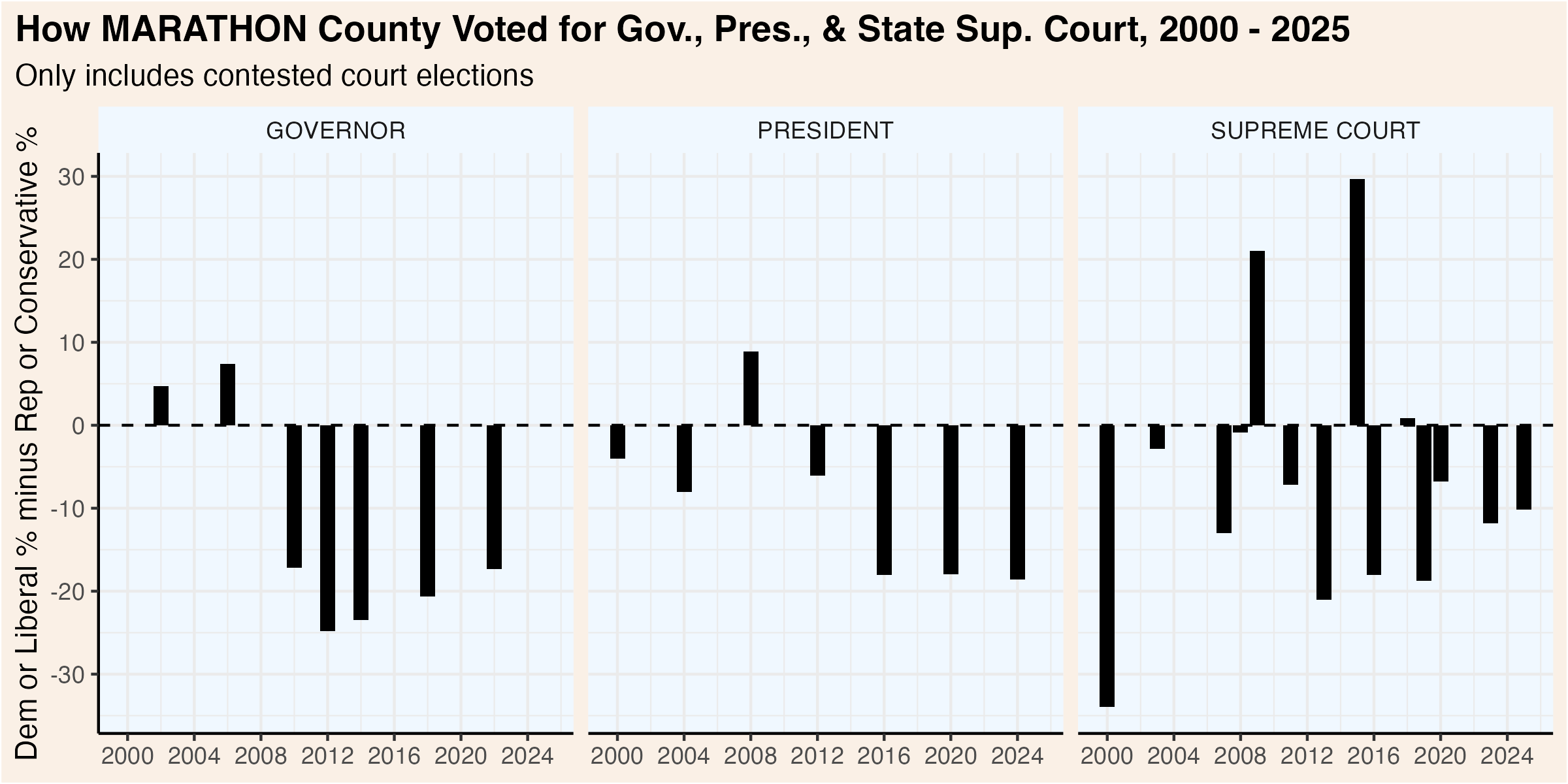
39 Marathon
Marathon County (pop. 138,000) is one of Wisconsin’s geographically largest counties, and it includes the main population center of north central Wisconsin. In terms of educational attainment, age, income, and population density, its population is generally similar to the state as a whole. Politically, Marathon County leans Republican.
39.1 Demographics

39.2 County Election Results

Click each column name to sort its values.
39.3 Municipality Election Results
Marathon County has an unusually large number of municipalities; 60 cities, towns, or villages include a population at least partly within the county. The largest is the City of Wasau (pop. 40,000), followed by the nearby Village of Weston (pop. 16,000). About 11% of Wasau’s population is Asian (the 10th highest share among Wisconsin municipalities), many of them Hmong refugees or their descendants. Politically, both Wasau and Weston have shown some signs of improvement for Democrats in recent cycles, but both frequently join the majority of Marathon county communities in voting for Republican candidates.
This map shows the location of each municipality in the county, as it existed in 2022.

These dot plots show the most recent election results in each municipality.



To more clearly illustrate recent changes in municipality voting trends, these scatterplots compare the most recent vote for president and senator with the shift from that office’s previous election.


These maps show show every election result since 2000 in each municipality.



Click each column name to sort its values.
39.4 Supreme Court Election Results
Wisconsin’s Supreme Court has 7 justices, each of whom are elected to 10 year terms in statewide elections held in April. State law prohibits more than one Supreme Court election from being held in a single year. If a seat becomes vacant, the governor appoints a replacement who serves until the next year in which no court election is already scheduled. If more than two candidates achieve ballot access, a nonpartisan, top-two primary is held in February.
Court elections are formally nonpartisan, but candidates are usually supported by either liberals or conservatives. In recent years, it has become common for the Democratic and Republican parties to endorse and actively campaign on behalf of favored judicial candidates. The liberal and conservative labels indicated in the following graphs and tables are based on widely recognized tendencies, not any formal affiliation.
39.4.1 County Election Results
This graphic compares how presidential, gubernatorial, and court elections have trended over the past quarter century. Click the “Table” tab to see detailed results for the Supreme Court races.

39.4.2 Municipality Election Results
The following table shows the results of each Supreme Court election by municipality. The graphic visualizes the shifts over the past three court elections.
